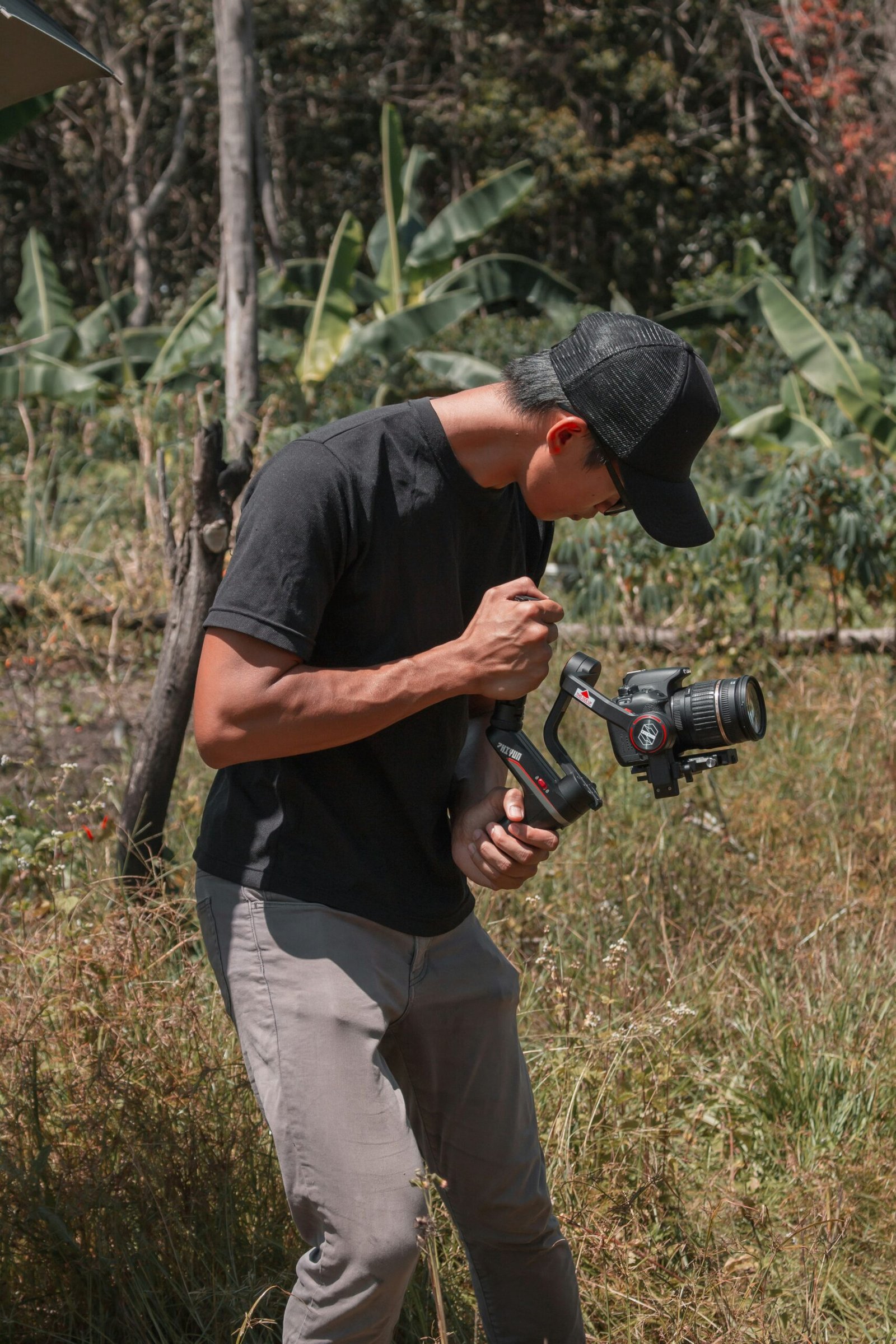Introduction
The current economic climate is characterized by a series of uncertain and challenging factors, including inflation, recession fears, and disruptions in global supply chains. Inflation rates have surged to historic highs, eroding purchasing power and increasing operational costs for businesses across the board. Moreover, persistent concerns about a potential recession loom large, leading to tightened consumer spending and cautious business investments.
Global supply chain issues, exacerbated by the COVID-19 pandemic and geopolitical tensions, have also contributed to economic instability. These disruptions have led to delays in product availability and increased costs for raw materials. Such economic turbulence necessitates a closer examination of its impact on various industries, including the photography sector.
The photography industry, intertwined with both consumer and professional markets, offers a unique lens through which to assess the repercussions of these economic variables. It is imperative to understand how inflation influences equipment prices, how recession anxieties alter client spending behaviors, and how global supply chain challenges affect the availability of photographic gear and accessories. This blog post aims to delve into these dimensions, thereby shedding light on how the economic landscape is shaping photographer profits in today’s world.
Impact on Photography Demand
The current economic climate significantly influences the demand for photography services. During periods of economic downturn, consumers often tighten their belts, leading to reduced spending on non-essential services. Photography, often seen as a luxury rather than a necessity, tends to suffer from these cutbacks.
Consumer behavior trends show that discretionary spending typically dips when economic uncertainty looms. Thus, this affects various subsets of photography services differently. For instance, wedding photography, which usually commands higher prices and is often booked months in advance, may see a decline in demand as couples opt for smaller, less extravagant ceremonies or postpone their nuptials altogether.
Commercial photography might also experience a dip, though it can vary based on the sector. Businesses dealing with budget constraints might cut down on marketing expenses, including photography for advertising campaigns. However, certain industries, such as e-commerce, might continue to invest in photography to maintain their online presence, potentially offsetting some of the losses.
Portrait photography, particularly the services provided by local photographers, might face a more direct impact. Families may prioritize essential expenses over periodic family portraits. The trend towards minimizing expenditures on luxury services in challenging economic conditions places these photographers at a disadvantage, leading to decreased bookings and tighter margins.
Overall, the economic climate fosters a competitive environment where photographers need to adapt. Diversifying services, offering flexible pricing, and focusing on sectors less impacted by economic volatility could be strategies to mitigate the adverse effects on demand.
The current economic climate has undeniably impacted the cost of photography equipment and supplies, creating a ripple effect within the industry. One of the primary factors driving up costs is inflation. Rising inflation rates have led to higher prices for essential photography gear, including cameras, lenses, and lighting equipment. This increase has been particularly noticeable in high-quality, professional-grade products, which are indispensable for delivering top-notch services.
Supply chain disruptions are another significant contributor to the escalating costs of photography equipment. The global supply chain has faced unprecedented challenges due to the COVID-19 pandemic, geopolitical tensions, and other economic variables. Delays in shipping, shortages of raw materials, and increased transportation costs have led to a scarcity of photography supplies. As a result, manufacturers and retailers have had to raise prices to offset these increased costs.
The rise in equipment expenses directly impacts photographers’ profit margins. When the cost of essential tools goes up, photographers may find themselves having to invest more capital to maintain the quality of their work. For freelance photographers and small studios, this can be particularly burdensome, as they often operate with tighter budgets compared to larger, established firms.
Moreover, photographers may need to absorb these rising costs themselves or pass them on to clients through higher service fees. Both scenarios present challenges; while absorbing costs can lead to reduced profits, increasing prices may deter potential clients or lead to decreased demand for services. The delicate balance of maintaining profitability while staying competitive in the market becomes a significant juggle for photographers navigating the current economic landscape.
In essence, the intertwined effects of inflation and supply chain disruptions on the cost of photography equipment underscore the broader economic pressures faced by photographers today. As they strive to deliver exceptional services despite these financial hurdles, understanding and adapting to these market changes becomes critical for sustained business operations and growth.
Pricing Strategies
In response to the current economic climate, photographers are continually adjusting their pricing strategies to navigate a fluctuating market. Striking a balance between maintaining profitability and staying competitive is crucial for sustaining business. One approach that has gained traction is the implementation of discounted packages. By offering special deals or temporary price reductions, photographers can attract cost-conscious clients who might otherwise forgo professional photography services.
Another viable strategy is the application of tiered pricing models. These models enable photographers to cater to various budget segments by providing multiple service levels at different price points. For example, a basic package might include a shorter session with fewer edited photos, while a premium package could offer an extended session and additional edited images, thereby giving clients the flexibility to choose a package that fits their financial constraints.
Additionally, added-value services have proven to be an effective tool for incentivizing clients. These supplementary offerings might include extras such as photo books, prints, or digital galleries at no additional charge. By enhancing the perceived value of their services, photographers can make their packages more appealing without necessarily lowering their base prices. This approach helps to sustain client interest and loyalty even during economic downturns.
Moreover, some photographers are exploring the option of subscription-based models. This approach offers clients a series of frequent, smaller sessions throughout the year for a flat monthly fee, thus providing both parties with a predictable revenue stream. This strategy not only helps clients manage their expenses better but also ensures consistent business for photographers during leaner times.
Overall, the adaptation of creative pricing strategies is indispensable for photographers aiming to navigate economic challenges effectively. Whether through discounted packages, tiered pricing models, added-value services, or subscription-based plans, these approaches enable photographers to remain competitive while protecting their profitability.
Marketing and Client Retention
In challenging economic climates, effective marketing and client retention become paramount for photographers striving to sustain their businesses. As economic uncertainties loom, photographers must adopt innovative strategies to attract and retain clients. One of the core avenues for achieving this is through the strategic use of social media platforms. By leveraging the extensive reach of social media, photographers can showcase their portfolios, engage with their target audience, and create a lasting impact. Regular updates, interactive posts, and sharing behind-the-scenes moments can foster a connection with potential clients, making the brand more relatable and trustworthy.
Enhancing one’s online presence goes hand in hand with social media efforts. This includes optimizing websites to be user-friendly and SEO-optimized, which improves visibility on search engines. Implementing a well-crafted content strategy that includes blogging, client testimonials, and showcasing recent work can significantly bolster online engagement. Moreover, ensuring that the website is mobile-friendly is crucial, as a significant portion of web traffic now comes from handheld devices. This seamless online experience enhances credibility and positioning in a competitive market.
Customer satisfaction remains a cornerstone of client retention, especially in turbulent economic periods. Providing exceptional service that exceeds client expectations can lead to positive word-of-mouth referrals and repeat business. Photographers should focus on understanding client needs, offering personalized services, and maintaining open communication channels. Regular feedback loops can identify areas of improvement and signal to clients that their opinions and experiences are valued. Offering loyalty programs, discounts for repeat clients, or special packages can also incentivize customer retention.
Numerous success stories illustrate how photographers have effectively navigated these challenges. For instance, Alex Harper, a well-known wedding photographer, utilized Instagram to not only display her stunning work but also to engage directly with prospective brides and grooms, resulting in a significant increase in bookings. Similarly, landscape photographer David Lin revamped his website, focusing on SEO-enhanced blog posts about his travels and techniques, which drove new traffic and client inquiries. These examples underscore that strategic marketing and an unwavering focus on client satisfaction can indeed sustain and even grow a photography business, even in an adverse economic climate.
Diversification of Services
In today’s fluctuating economic climate, photographers are increasingly turning towards service diversification to stabilize and even boost their profits. The agility to adapt and offer a wider array of services has proven pivotal in mitigating the financial risks connected to economic downturns. By branching out into related fields such as video production, virtual tours, and stock photography, photographers can capture new revenue streams and tap into emerging market demands.
Video production has emerged as a significant opportunity for photographers well-versed in visual storytelling. With video content consumption surging across social media, websites, and digital marketing campaigns, photographers can easily expand their portfolio by providing video services. This diversification not only caters to existing clients looking for multimedia solutions but also attracts new clientele interested in dynamic and engaging content.
Additionally, the advent of virtual tours represents another lucrative avenue. Real estate, hospitality, and retail sectors have seen a marked increase in demand for virtual experiences, especially amid global travel restrictions and social distancing measures. Photographers transitioning into virtual tour production can offer clients a comprehensive package that includes high-quality images, 360-degree views, and interactive elements. This enhanced service range not only increases profit margins but also establishes photographers as versatile and adaptive professionals in changing market conditions.
Stock photography remains a reliable income stream, particularly in an era where digital content creation is paramount. By submitting their work to stock photo agencies, photographers can generate a steady, passive income. High-quality, relevant stock images are in constant demand by businesses, bloggers, and designers, underscoring the importance of having a well-curated portfolio available on multiple stock platforms.
Diversification allows photographers to leverage their existing skills and knowledge in novel ways, enhancing their market resilience. By strategically integrating video production, virtual tours, and stock photography into their service offerings, photographers can navigate economic challenges while sustaining and potentially increasing their profit margins.
Financial Management
Effective financial management is crucial for photographers navigating the complexities of an uncertain economic climate. Strategic budgeting, meticulous cash flow management, and comprehensive financial planning serve as the pillars to resilient financial health. With the current downturn posing challenges, adopting sound financial practices becomes more vital than ever.
Firstly, a well-structured budget is imperative. Budgeting allows photographers to track income and expenses meticulously, providing a clear financial picture that aids in making informed decisions. Prioritize essential expenditures such as equipment maintenance, software subscriptions, and marketing efforts, while identifying areas where costs can be reduced. Implementing software tools designed for small businesses can streamline this process, ensuring more accurate and real-time tracking.
Cash flow management is equally important in maintaining business stability. Photographers should aim to secure a stable inflow of revenue by diversifying their income streams. This could involve exploring new photography niches, offering educational workshops, or selling prints and stock photos. Additionally, negotiating favorable payment terms with clients and diligently following up on overdue invoices can help stabilize cash flow. Setting aside a portion of income for an emergency fund can also act as a buffer against financial uncertainties.
Financial planning extends beyond day-to-day operations. Careful planning for future investments in the photography business can lead to substantial long-term benefits. For instance, investing in high-quality equipment or advanced skill training can enhance service offerings, opening doors to higher-paying opportunities. Consider consultation with a financial advisor to devise a tailored financial plan that accommodates both current needs and future goals.
Cost-cutting measures are also vital during economic downtimes. Review business expenses critically to identify non-essential costs that can be eliminated or reduced. Opt for cost-effective marketing strategies such as leveraging social media platforms and collaborating with influencers. Bulk purchasing consumables or opting for refurbished equipment can also result in significant savings without compromising quality.
Through disciplined financial management, from budgeting and cash flow management to strategic investments and cost-cutting, photographers can better equip themselves to overcome the financial challenges posed by the current economic climate. Adopting these strategies will not only fortify their current financial position but also pave the way for sustainable growth in the photography business.
Future Outlook
The future outlook for photographer profits in the context of the current economic climate is multifaceted, reflecting both uncertainty and potential for growth. As economic conditions continue to fluctuate, photographers may face challenges such as reduced client spending and increased competition. However, these economic challenges also present opportunities for innovation and adaptation within the photography industry.
One potential scenario is an increase in demand for budget-friendly photography services. In times of economic restraint, clients may seek out more affordable options, leading to a rise in the market for cost-effective photo packages. Photographers who can optimize their services to provide high-quality work at lower prices stand to gain a competitive advantage.
Additionally, the integration of emerging technologies could play a crucial role in shaping the future of photography. The advancement of artificial intelligence and machine learning offers photographers tools to enhance their efficiency and creativity. From automated editing software to AI-driven photography assistants, these technologies could streamline workflows, reduce costs, and improve overall productivity, enabling photographers to deliver better value to their clients.
The rise of social media and digital marketing also offers an avenue for photographers to expand their reach and showcase their portfolios to a broader audience. By leveraging these platforms, photographers can attract clients from diverse geographical locations, potentially increasing their client base and profits despite a challenging economic backdrop. Moreover, the adoption of video content has been on the rise, providing photographers with additional skills and services to offer, thus diversifying their revenue streams.
In conclusion, while the current economic climate presents certain challenges, it also brings forth opportunities for growth and resilience in the photography industry. Photographers who remain adaptable, embrace technological advancements, and cater to evolving client needs are well-positioned to navigate the uncertainties and potentially thrive in the years to come.
For information on how today’s economic climate is affecting photographers, you can refer to the following sources:
- The Impact of Rising Costs and Inflation on Creative Freelancers – PetaPixel
- How Inflation and Supply Chain Issues Are Hitting Photographers – Fstoppers
- The Economic Strain on the Photography Industry Amidst Rising Costs – Photo District News (PDN)




